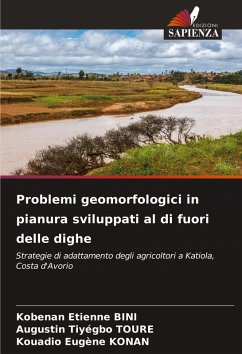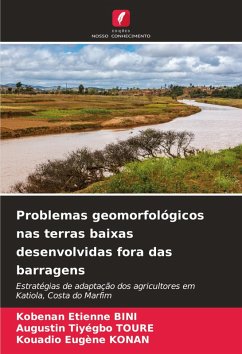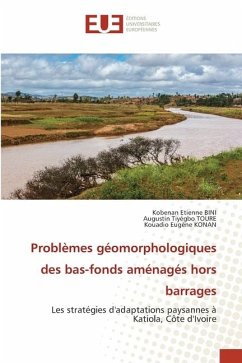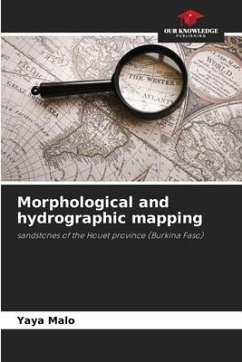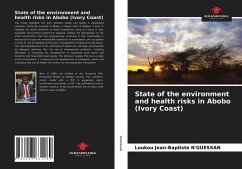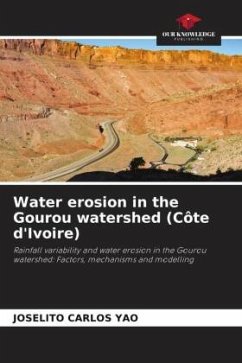
Geomorphological problems in non-dam lowlands
Farmers' adaptation strategies in Katiola, Côte d'Ivoire
Versandkostenfrei!
Versandfertig in 6-10 Tagen
45,99 €
inkl. MwSt.

PAYBACK Punkte
23 °P sammeln!
The Gnomonkah lowland, located in the Katiola area of Côte d'Ivoire, concentrates just about all the problems faced by rice growers in the Hambol region. Not least of these is the lack of control over geomorphological constraints. These constraints, which are both static and hydrodynamic, can be summed up in a complex problem: that of controlling water on sites whose development remains virtually unfinished. Lowlands are characterized by specific hydrological dynamics. The rhythm of the seasons, the amount of rainfall and the flatness of the terrain determine the distribution of the hydrograp...
The Gnomonkah lowland, located in the Katiola area of Côte d'Ivoire, concentrates just about all the problems faced by rice growers in the Hambol region. Not least of these is the lack of control over geomorphological constraints. These constraints, which are both static and hydrodynamic, can be summed up in a complex problem: that of controlling water on sites whose development remains virtually unfinished. Lowlands are characterized by specific hydrological dynamics. The rhythm of the seasons, the amount of rainfall and the flatness of the terrain determine the distribution of the hydrographic network in the lowlands. These factors help to increase their alluvial fill. The geomorphology of the environment increases the sediment load of the water and imposes micro and meso-modelled forms. This in turn has an impact on the hydraulic system, leading to problems of water control. In low-lying areas, the dynamics of the environment impose themselves and make farming practices vulnerable.





